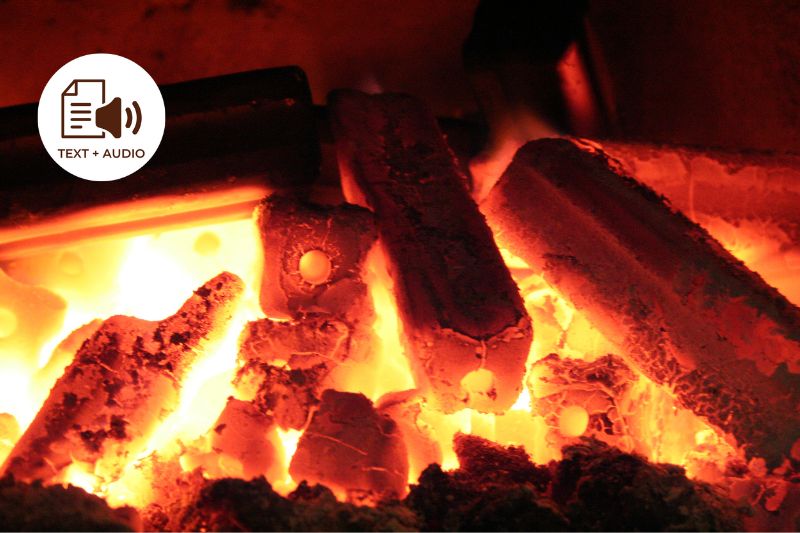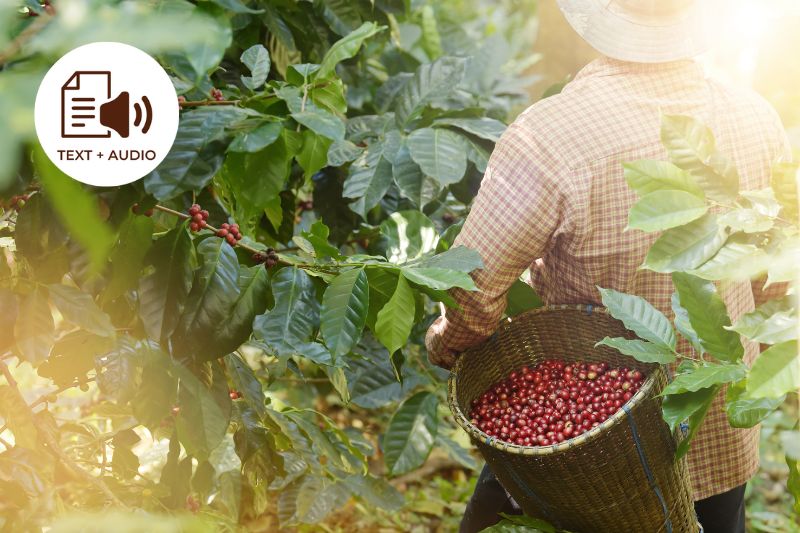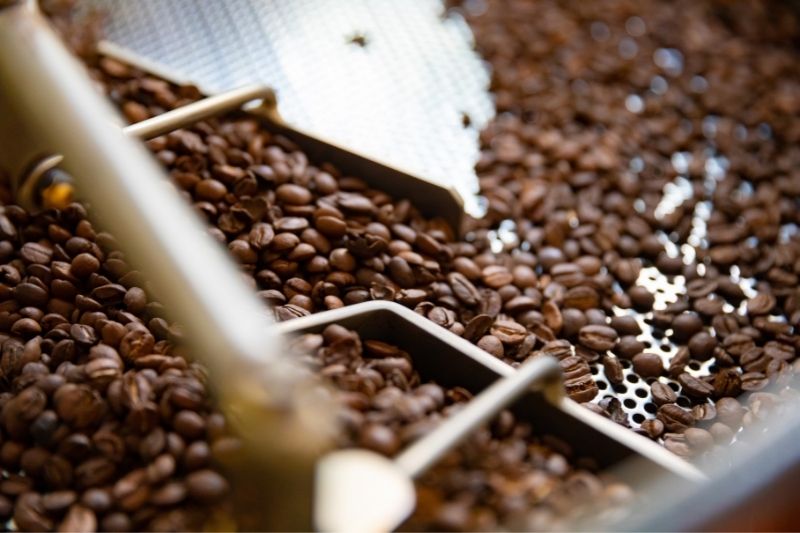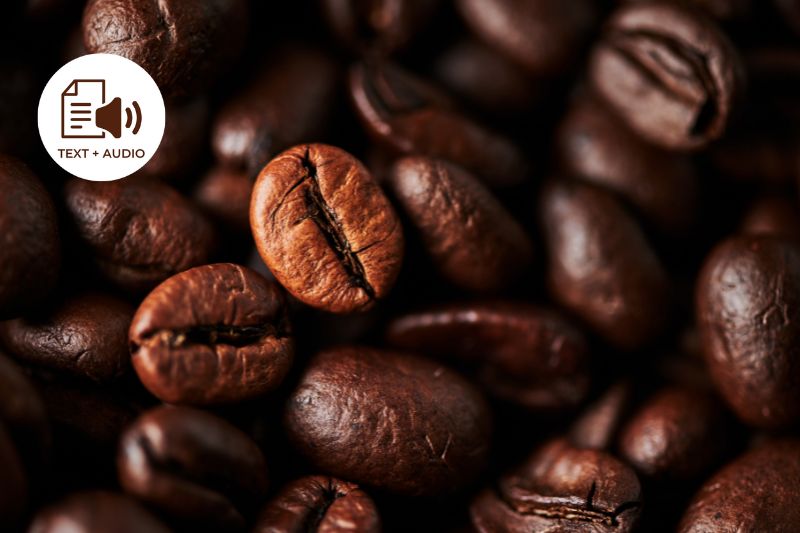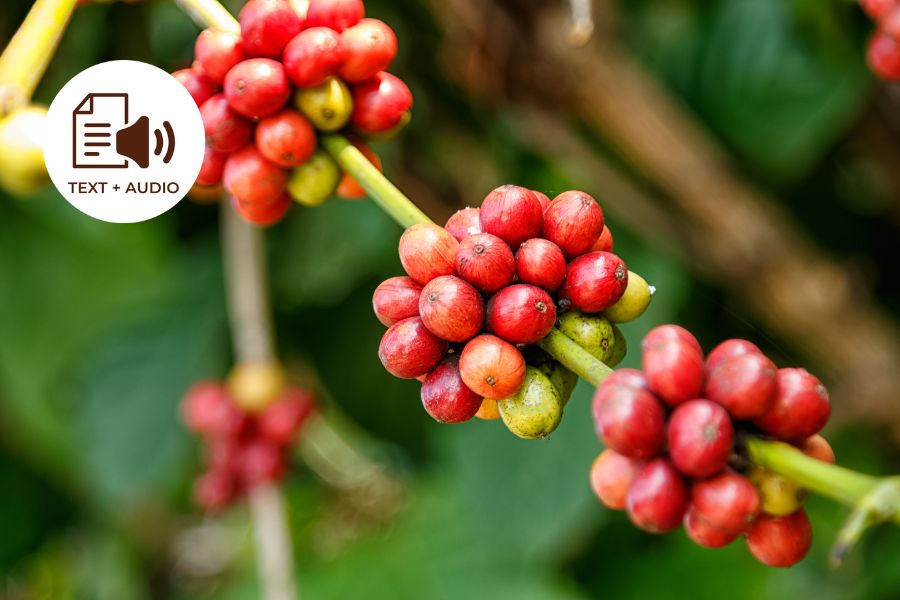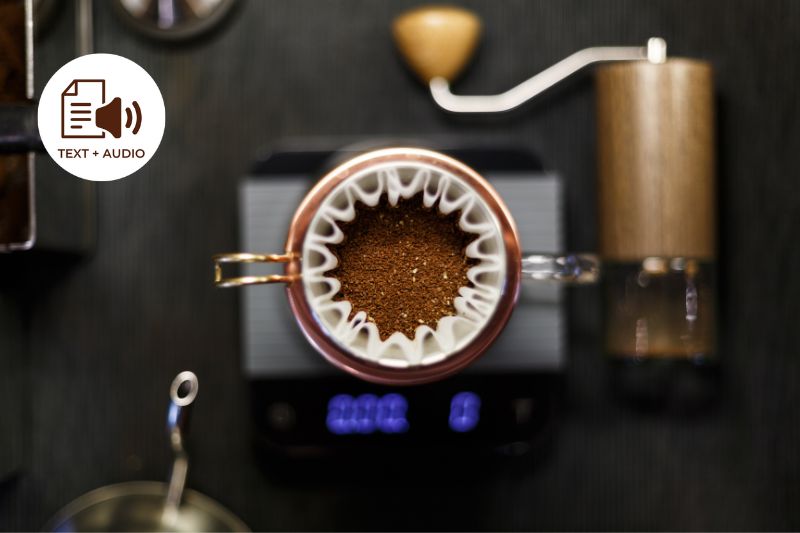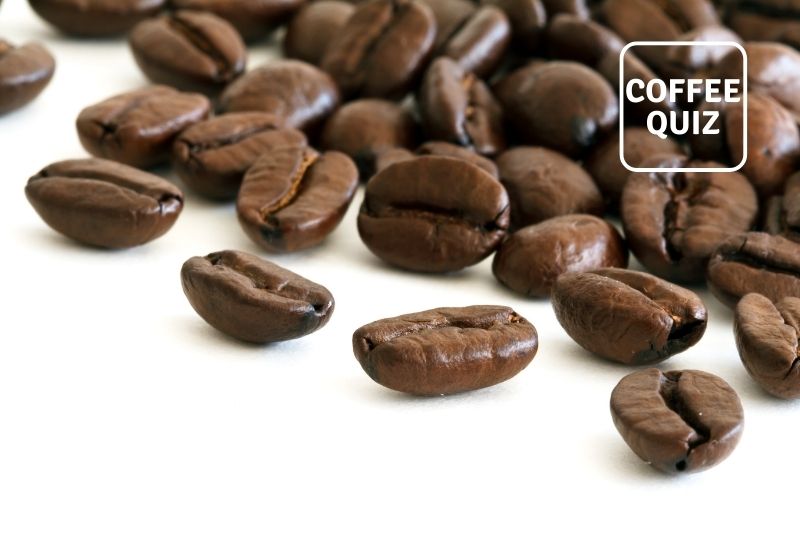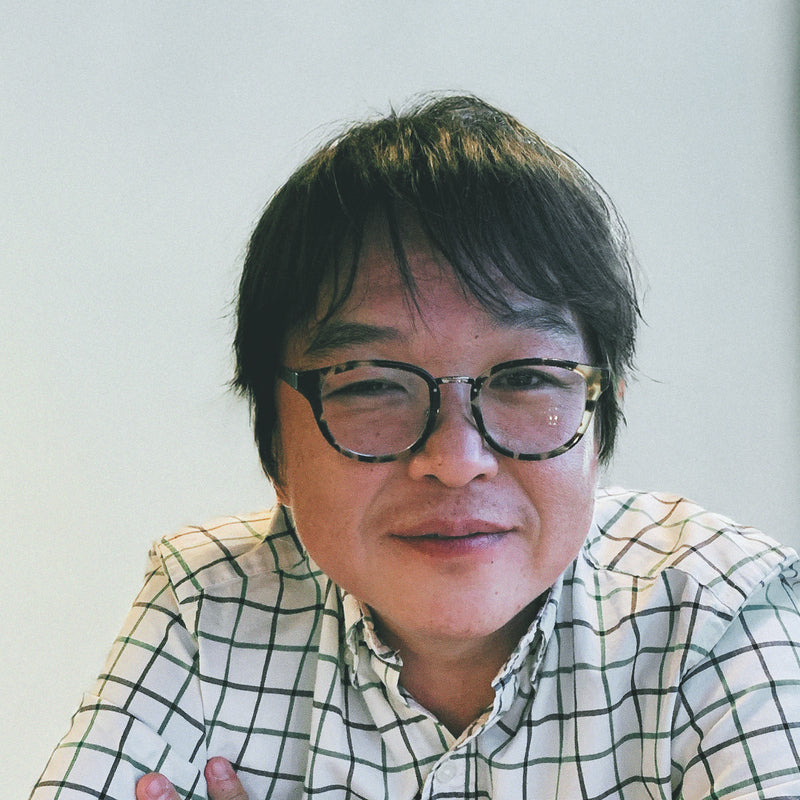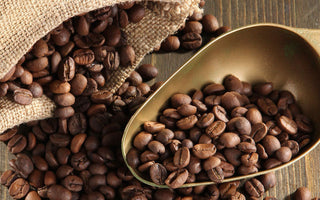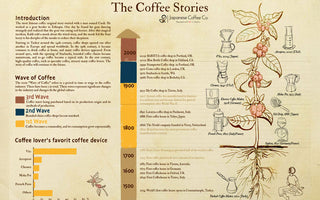Many people want their coffee to taste the same every day, but amongst us coffee lovers, there are the true aficionados who are always in search of exceptional coffee beans!

This is why we have put together a list of some of the most exotic, premium, and unique coffees from around the world. Spanning across different continents, each coffee comes with a capturing story, and a unique flavor.
Let’s discover them together!
1. Kenya AA
Coffee first appeared in Kenya. The British brought the fruit from neighboring Ethiopia, as well as from the island of Bourbon. In Kenya, we find excellent varieties of coffee - SL28 and SL34 - which are coffees world-famous for their wonderful complexity and unparalleled acidity.
Kenya is now established as a leader in the production of high-quality coffee, and is widely recognized for its fruity, intricate profiles. Coffee beans "A" symbolize the grains that exceed the average size, while "AA" is the highest quality measurement available in this area.
The taste characteristics of Kenya AA are intense flavor, aroma of stone fruits and grapefruits, sweet lemon acidity, rich silky body, and a clean, sweet aftertaste of caramel and chocolate!

2. Bourbon
No, we are not talking about American whiskey! Bourbon is a special variety of Arabica coffee beans. The origin of Bourbon coffee is known to be Yemen, but at the beginning of the 18th century, the botanists of the King of France brought it to the island of Bourbon, from which it took its name. This island has been called Réunion since the years of the French Revolution.

And while most coffee we know comes from the famous ripe red fruit, this is not the case with Arabica Bourbon. As a matter of fact, there are two variations: one comes from the Bourbon Vermelho plant, which grows red fruit and is found on the island Réunion and Bourbon Amarello. This type is grown in Brazil, and due to its crossbreeding with the local species, the fruit from which we get the coffee beans is yellow. The yellow fruits of this variety are distinguished for their sweet taste and their early ripening.
The Bourbon variety grows best at an altitude of 1,100 to 2,000 meters. It is cultivated mainly in southeastern Brazil, and more specifically in the Santo region. The mineral-rich, volcanic slopes of this area as well as its balanced climate are ideal conditions for this variety.
The Bourbon variety is characterized by an intense acidity and a sweet aftertaste, similar to that of wine. In your cup, you will find chocolate flavors as well as light fruity notes. Without a doubt, Bourbon is a truly elegant coffee with a long history!

3. Pacamara
El Salvador Pacamara could not be missing from this list as it represents a modern generation of coffee producers that love to experiment and offer amazing results! Pacamara is a hybrid Arabica coffee produced by the Salvadoran Coffee Research Institute (ISIC) in 1958.
It is a combination of the Maragogype and Pacas varieties, a blend that took almost 30 years of research to be finally made available to producers in the late 1980s. It is named after a variety of tall crop trees (Maragogype), and a variety of small and hardy coffee trees (Pacas) respectively.
The result is a medium-sized coffee tree with a rich leaf volume, a number of large round shaped cherries with small knobs. The cup profile is characterized by an aroma of apricot, caramel, and flowers with high sweetness and intense fruity acidity, rich creamy body, and a fruity sweet aftertaste with notes of butter caramel. Delicious!
4. Tokunoshima
Have you ever heard of the coffee belt? It is a geographical band about 25 degrees north and south of the equator and it covers the regions where all coffee is primarily grown. The ideal climate solutions are the reason why coffee grows only in these regions.
Japan is not part of this coffee belt as it’s located slightly north to qualify. However, that did not stop the Japanese from growing coffee in Tokunoshima! Tokunoshima is an island in the Amami archipelago of the southern Satsunan Islands of Kagoshima Prefecture in Japan.

Back in 1983, the young Seiichi Yoshitama, after his trip to Brazil decided to plant coffee seedlings next to his sugar cane plantation. Yoshitama definitely took a risk in experimenting this, as he had to battle off difficult weather conditions. However, his efforts eventually paid off!
Most of his crop is sold and consumed at a coffee shop owned by his wife, but his initiative has attracted the attention of major companies like Ajinomoto AGF and Nestlé who have started planting more coffee trees in the Kagoshima and Okinawa prefectures.
There are only two ways you can try this coffee, either by visiting Tokunoshima or by waiting for one more year until Ajinomoto’s harvest is ready for picking! One thing is for sure - nobody has done something like this before, and the coffee world is excited for the results!

5. Ethiopia Yirgacheffe
Ethiopia is a country with a long tradition in coffee production. First of all, it is the birthplace of arabica coffee. Of course, the plant is now grown in many parts of the world, while Ethiopia itself represents 3% of the global coffee market.
The Sidamo region of Ethiopia is where Yirgacheffe coffees are grown. At first glance, the hills of Yirgacheffe look like a giant forest but in reality, it is a very densely populated area with many houses and villages cultivating what is called "garden coffee".
There are about 26 coffee cooperatives in the area, representing 43,794 farmers and 62,004 hectares of coffee. Yirgacheffe coffee is traditionally known for its jasmine aroma and floral and citrus characteristics, which makes it stand out from many other coffees.
These characteristics actually make it a preferred coffee in many competitions because it’s unique and complex. We all know that coffee beans are the seeds of coffee cherries but if you try this coffee from Yirgacheffe then you will truly realize that coffee really is a fruit!
6. Toarco Toraja
The Toarco coffee plantation is located in Indonesia on the island of Sulawesi, almost 2000m above sea level in the Toraja region, which is famous for the ancient and complex culture of the Toraja people from the Sulawesian highlands. The name of the coffee comes from Toraja Arabica Coffee.
The social standards on this coffee plantation are very high. For example, there is a computer room for the coffee pickers, in which they can use the computers and the internet free of charge after their work is done!

The processing of the coffee cherries is very methodical, the pickers work very cleanly and only pick the ripe, reddest cherries. Before the daily harvest is weighed, unripe cherries are sorted out. The coffee is then washed in three stages, both by machine and by hand.
What’s actually really special about this coffee is that for years it had disappeared from the market due to the abandoned coffee plantations. This was until Japan's Key Coffee Company financed an effort to build roads to the plantations and coffee processing facilities.
So, this unique coffee is a beautiful collaboration between Japan and Indonesia and has a cup profile characterized by a walnut and chocolate aroma with spicy notes. You will taste flavors of cocoa and nuts and an aftertaste of caramel. From the heart of Indonesia, with a little help from Japan, straight into your cup!

7. Kopi Luwak
Kopi Luwak or civet coffee is perhaps the most unusual and expensive coffee in the world. Produced in Indonesia all thanks to the wild Asian palm civet (a small animal that looks like a weasel). This animal loves eating the coffee cherries but cannot break down the coffee beans so it excretes them with their feces.
The beans are then collected by the producers and after being cleaned and roasted, they are commercially available. The reason why this coffee is so popular apart from its curious connection to the animal is that the process of digestion gives the coffee beans an excellent aroma and flavor. The animal has an excellent nose and able to sense what human cannot. They are known to pick only the ripe and good coffee bean.
In your cup, you will find a smooth mouthfeel, chocolate, and caramel notes, along with a light body and a full, complex taste. However, it’s important to note that if you are interested in trying this coffee, you want to look for a certificate of authenticity on the package. This ensures that the beans are authenticated to ensure no caged or force-fed animals were used in their production of the coffee.
8. Sumiyaki
Sumiyaki, which means “charcoal roasted” in Japanese, is a roasting method during which the roaster uses charcoal. This makes it very unique as most roasters around the world usually roast their coffee either by using gas or hot air.
But how does charcoal affect the aroma and flavor in your cup? And why are there all these different roast types out there? Well, there are actually a few ways to roast coffee beans, and yes they have a major impact on the final flavor in your cup!

Light and medium roast profiles bring out flavors such as fruit, acidity, and brightness while dark roast styles are for lovers of smoky and intense flavors.
Enter Sumiyaki coffee! While its origins date back to 1933, it’s only in the last few years Sumiyaki coffee has taken center stage. The idea of the Sumiyaki method is perfect in its simplicity. For example, why do we prefer grilling a steak over charcoal? Because we know it’s going to make it taste amazing.
It’s no wonder the Japanese have been roasting Sumiyaki coffee for many years! You’ll understand what we mean when you inhale the rich, smoky aroma of this coffee. In your cup, you will find flavors of molasses, oak, dark chocolate, and roasted nuts. A cup is full of balanced flavors, syrupy mouthfeel, and a smoky finish.

9. Panama Gesha
While the Gesha variety was first discovered in 1930 it wasn’t until 2004 that it caught the interest of a few coffee quality judges, when it appeared in a competition for the best coffee in Panama. Since then, its evolution has been rapid! A typical example is its price, which skyrocketed from $ 21 a pound in 2004 to $ 350 in 2013!
But what’s so special about Gesha coffee? The climate grows in gives the coffee an incredible complexity, strong floral elements, and a huge range of flavors. In the cup you will find jasmine, rose and bergamot, while the notes of citrus, mango, berries, papaya, peach, pineapple, and other tropical fruits are not missing.

What is special, however, is how all these aromas and flavors change in the cup: it starts with a floral, aromatic profile, passes smoothly to a fruity sweetness with hints of honey to end with a subtle acidity with a long and strong aftertaste.
Panama may claim the top spot in Gesha cultivation and production, but in recent years, due to its growing demand, we have seen other countries such as Colombia, Costa Rica and even Ethiopia develop its cultivation. This one is definitely worth a try!

10. Jamaica Blue Mountain
Jamaica is known for producing the most beautiful and expensive coffee in the world, and the reason is its location: the Blue Mountains. Jamaica Blue Mountain coffee is a high quality coffee that is appreciated all over the world.
The rich soils, the temperate climate of the Caribbean that surrounds the island, the rainfall, and the altitude in the plateaus of the mountains on the east side, create extremely favorable conditions for growing coffee, in mixed crops with bananas and avocados.
The large and oval coffee beans, a common characteristic of the Arabica variety, after processing by washing and drying, turn into blue-green color. When roasted these beans acquire a strong aroma of exotic fruit.
In your cup, you will find mild flavors and a subtle acidity without bitterness, while its aroma is intense and can be described as a combination of floral notes, nuts, and herbs. It is no coincidence that it is one of the most premium coffees in the world so if you are a coffee aficionado, this one should definitely be on your coffee bucket list.
Get Free Bonus Books

Sign up for free to the Coffee Club to get advice and exclusive articles about how to choose Japanese Coffee, and tips, tricks, and recipes for enjoying Japanese coffee.
About the author
Kei Nishida
Author, CEO Dream of Japan
Certification: PMP, BS in Computer Science
Education: Western Washington University
Kei Nishida is a passionate Japanese tea and coffee connoisseur, writer, and the founder and CEO of Japanese Coffee Co. and Japanese Green Tea Co., both part of Dream of Japan.
His journey began with a mission to introduce the world to the unparalleled quality of Japanese green tea. Through Japanese Green Tea Co., he established the only company that sources premium tea grown in nutrient-rich sugarcane soil—an innovation that led to multiple Global Tea Champion awards.
Building on this success and his passion for Japanese craftsmanship, Kei expanded into the world of coffee, pioneering the launch of Japanese Coffee Co., the first company to bring Sumiyaki charcoal-roasted coffee to a global audience. His dedication to authenticity and quality ensures that this traditional Japanese roasting method, once a well-kept secret, is now enjoyed worldwide.
Beyond tea and coffee, Kei has also introduced Japan’s legendary craftsmanship to the world through Japanese Knife Co., making handmade katana-style knives—crafted by a renowned katana maker—available outside Japan for the first time.
Kei’s journey continues as he seeks out and shares the hidden treasures of Japan, one cup and one blade at a time.
Learn more about Kei



